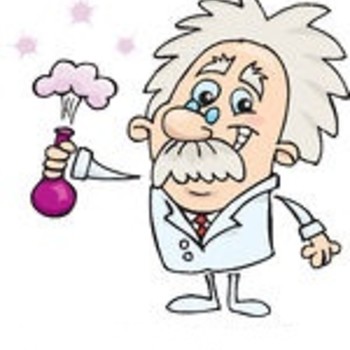Nuclear Chemistry and Half-life calculations?
If Rb-87 decays to form Sr-87 and the half-life of the reaction is 4.8E^9, what is the nuclear equation of the reaction? Also if .100% of a rock is Rb-87, and .00250% is Sr-87, assuming the rock did not contain any Sr-87 beforehand. How old is the rock? Would the answer be around 2.57E^11 years old?
If Rb-87 decays to form Sr-87 and the half-life of the reaction is 4.8E^9, what is the nuclear equation of the reaction? Also if .100% of a rock is Rb-87, and .00250% is Sr-87, assuming the rock did not contain any Sr-87 beforehand. How old is the rock? Would the answer be around 2.57E^11 years old?
3 Answers
Age of rock =
Explanation:
Given:
Assuming rock did not contain Sr-87 at start (from problem text), and all Sr-87 comes from decay of Rb-87, then...
Apply to 1st order decay equation
and solve for time (t) =>
Nuclear equation for Rubidium-87 decay to Strontium-87 by beta decay is
#""_87^37"Rb" -> ""_87^38"Sr" +beta_0^(-1)#
Given initial sample
Has
#"Rb"# only
After time#t# , ratios are#=0.100%\ "Rb"# and# = 0.00250%\ "Sr"#
#t_(1/2)=4.8xx10^9yrs#
#=> lambda=ln2/t_(1/2)=ln2/(4.8xx10^9)=1.444xx10^-10\ yrs^-1#
The amount of
- the decay constant of
#87"Rb"# , - the initial amount of
#87"Sr"# in the sample, - the time elapsed since the initial time and
- the ratio of
#"Rb"# to#"Sr"# in the system.
This can be seen in the equation below.
#87"Sr"("sample")= 87"Sr"("initial")+87"Rb"("sample")(e^(lambdat)-1)#
where#lambda# is the decay constant and#t# is the age of the sample.
Inserting given values we get
#0.00250= 0.100(e^(1.444xx10^-10t)-1)#
#=> (e^(1.444xx10^-10t)-1)=0.00250/0.100#
#=> e^(1.444xx10^-10t)=1.025#
Taking natural logarithm of both sides and solving for
#t=1.71xx10^8\ yrs#
Explanation:
Rubidium undergoes
At the start of the decay process the sample only contains Rb - 87. As it decays exponentially the amount of Sr - 87 grows correspondingly.
The decay is a 1st order process such that:
Since the decay of 1 atom of Rb - 87 produces 1 atom of Sr - 87 we can say that:
Where
The decay equation can therefore be written:
The half - life of Rb - 87 is
We can get the value of the decay constant from the expression:
We can get the number of moles of each isotope by dividing the % mass by the mass of 1 mole:
There is no need to convert these into a number of atoms by multiplying these by the Avogadro Constant since we are interested in the Sr/Rb ratio so this cancels anyway.
Taking natural logs of both sides


